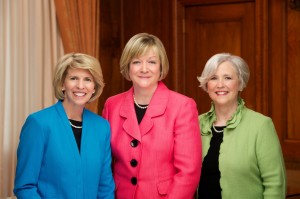Unless you live under a rock, you are no doubt aware of the high-profile movement that has been urging Church leaders to pray to ask God for new revelation regarding the hanging of pictures of female leaders in prominent church buildings. Led by Washington, D.C.-based human rights attorney Sherri Shelley, this movement has been making waves in the media, including the New York Times, Buzzfeed, the Huffington Post, and even the Provo Daily Herald, pushing their “non-negotiable” agenda.
Said Shelley:
The Joseph Smith Papers Project has brought to light historical documents proving that Joseph Smith espoused the then-radical egalitarian belief that pictures of female church leaders should hang side-by-side with pictures of male leaders in church buildings. He even told Emma and other prominent sisters in the first meeting of the Relief Society that its meetinghouse walls, “…would one day be a veritable kingdom of tastefully-framed photographs of well-coiffed women in a kaleidoscope of pastel colors.”
The Church, not surprisingly, pushed back at first, stating in a letter from the Public Affairs Department that the Movement to Hang Pictures of Female Leaders in Church Buildings represents only a tiny minority of LDS women. Spokesperson Jessica Rooney explained: Read More


